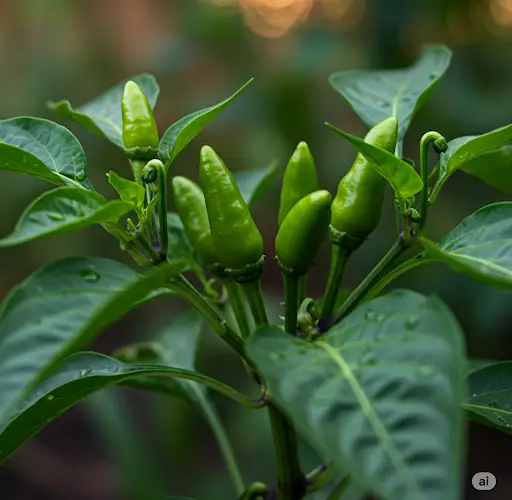Growing peppers from seed can be a rewarding endeavor, but achieving successful germination requires attention to specific conditions. Pepper seeds are known for their slow and sometimes erratic germination, but with the right techniques, you can significantly enhance both the speed and success rate of your seedlings.
1. Maintain Optimal Temperature
Pepper seeds thrive in warm conditions. The ideal soil temperature for germination ranges between 80°F to 90°F (27°C to 32°C). If your indoor environment is cooler, consider using a seedling heat mat equipped with a thermostat to maintain consistent warmth. Alternatively, placing seed trays in naturally warm spots, such as on top of a refrigerator or near a heating vent, can also be effective.
2. Utilize a Humidity Dome
Consistent moisture is crucial for pepper seed germination. Using a humidity dome over your seed trays helps retain moisture and maintain a stable environment. Ensure the dome is removed daily for a short period to allow fresh air circulation, which prevents mold growth and provides necessary oxygen to the seeds.
3. Soak Seeds Before Planting
Pre-soaking pepper seeds can soften their hard outer shells, promoting faster germination. Place seeds in a bowl of warm water for 8 to 24 hours before planting. This process helps in breaking seed dormancy and accelerates sprouting.
4. Employ the Paper Towel Method
The paper towel method is a popular technique to monitor seed germination closely. Place soaked seeds between moist paper towels, insert them into a plastic bag or container, and keep them in a warm, dark place. Check daily for sprouting, and once roots appear, carefully transfer the seeds to soil.
5. Use a Quality Seed-Starting Mix
A light, well-draining seed-starting mix provides the ideal environment for pepper seeds. These mixes retain moisture without becoming waterlogged and offer good aeration, essential for root development. Avoid using regular garden soil, which may be too dense and contain pathogens harmful to seedlings.
6. Practice Seed Scarification
Some pepper seeds have particularly tough coats that impede water absorption. Gently nicking the seed coat with a file or sandpaper, or soaking seeds in warm water, can help break down this barrier, facilitating quicker germination.
7. Prevent Damping-Off Disease
Damping-off is a fungal disease that affects seedlings, causing them to wilt and die. To prevent this, ensure good air circulation around your seedlings, avoid overwatering, and use sterilized containers and fresh seed-starting mix. Additionally, sprinkling a light layer of cinnamon on the soil surface can act as a natural antifungal agent.
8. Provide Adequate Lighting Post-Germination
Once your pepper seeds have germinated, they require ample light to grow strong and healthy. Place seedlings under grow lights or in a sunny windowsill where they can receive 12-16 hours of light daily. Proper lighting prevents leggy growth and promotes robust development.
9. Monitor and Adjust Watering Practices
Consistent moisture is key, but overwatering can be detrimental. Keep the soil evenly moist but not soggy. Using a spray bottle can help control the amount of water applied, ensuring the delicate seedlings are not disturbed.
10. Be Patient and Observant
Pepper seeds can take anywhere from 7 to 21 days to germinate, depending on the variety and conditions. Regularly check your seeds for signs of sprouting and be patient. If certain seeds haven’t germinated after a few weeks, consider trying different techniques or assessing the viability of the seeds.
Conclusion
Successfully germinating pepper seeds involves creating the right environment—warmth, moisture, and light are critical factors. By implementing these tips, you can enhance your germination rates and enjoy a bountiful pepper harvest. Remember, each seed variety may have its nuances, so observe and adjust your methods as needed for the best results.



